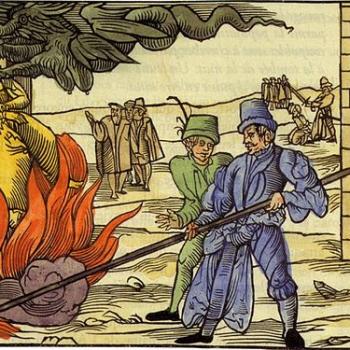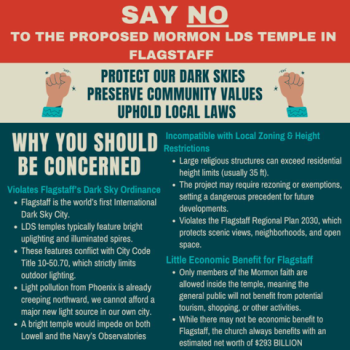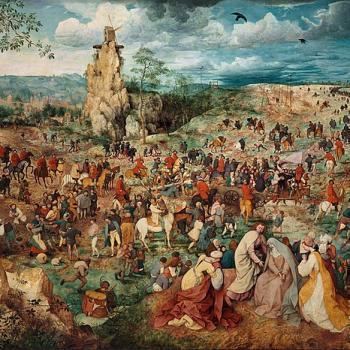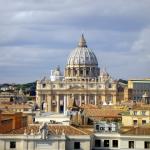
(A 2019 still photograph by James Jordan, taken on the set of the Interpreter Foundation’s 2021 theatrical film “Witnesses.”)
My wife and I attended Scripture Central’s annual “Moroni Day” dinner and program last night in the Hyatt Regency in Salt Lake City. We enjoyed it (not least for the conversations with friends there both before and afterwards), and we were impressed — as we were intended to be! — by the scope of what our colleagues at Scripture Central are doing. Out of the wreckage of the old Maxwell Institute some wonderful things have emerged. It’s very possible, in fact, that they would not have emerged had it not been for the events that occurred at the Maxwell Institute somewhat more than twelve years ago.
Given “Moroni Day,” this article, written by Scott Raines, is very timely. It appeared yesterday (Friday) in the Deseret News. “This Saturday” is today: “Perspective: Billions shall know ‘Brother Joseph’ again: 201 years ago this Saturday, an angel told a young boy about a book buried in the ground — but not before warning him that his name would be “both good and evil spoken of among all people.””
Next item: How did I miss this? I don’t know, but I did miss it. I watch for articles by Jacob Hess, but somehow I failed to see this one, which appeared on the anniversary of the assassination of Joseph and Hyrum Smith and which touches on a subject in which, I think I may honestly say, I have a demonstrably strong personal interest. Heck, the article even cites me, and it mentions our 2021 movie, Witnesses: “195 years later, the witnesses of the Book of Mormon are receiving more attention than ever: These events, which took place 195 years ago this week, have been dismissed by some who are ignorant of the long precedent in human history for the significance of a group of consistent and enduring eye witnesses to establish the truth of any important occurrence.”

Associated Press: “Kamala Harris steps up outreach to Mormon voters in battleground Arizona”
Axios: “Mormons are organizing for Harris — and they could swing the 2024 election”
Newsweek: “Mormons Could Help Kamala Harris Win Arizona”
National Public Radio (five-minute audio recording): “These Mormon women are rejecting Trump, fraying GOP support in a key state”
New York Times (three-minute video, including very brief clip of Elder Patrick Kearon of the Twelve): “Arizona’s Mormon Voters Are Divided on Trump”
Somebody will need to explain to me, though, what this “Kamala Harris” thing is. It sounds to me as if it might be the name of a pharmaceutical company.
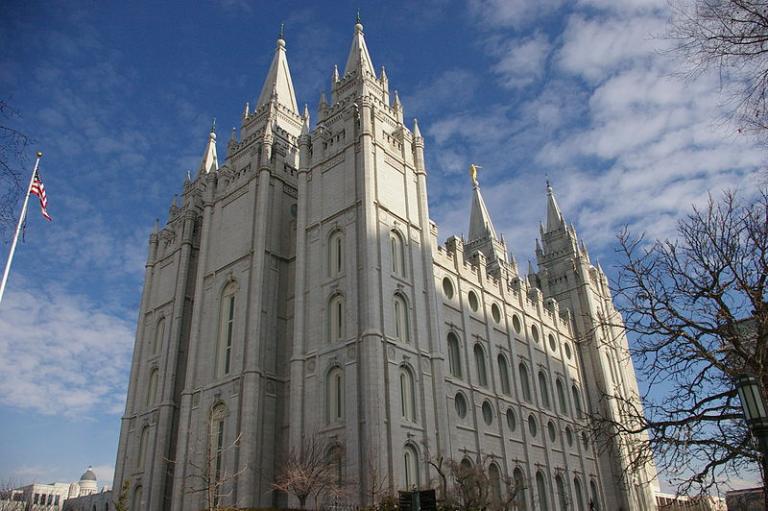
Two articles were released this morning on the subject of the architectural and design changes that are occurring at the Salt Lake Temple. The first, issued by the “Newsroom” of the Church of Jesus Christ of Latter-day Saints, is entitled “Harmonizing Sacred Past and Future: A Look at the Salt Lake Temple’s Interior Renovation: The renovation project honors history and better accommodates sacred worship for generations.” The second appears in the Salt Lake Tribune, and readers who are able to gain access to it will quickly notice that it takes a somewhat different approach: “Lost in transformation: Preservationists lament the ‘gutting’ of the Salt Lake LDS Temple: Church officials insist the renovation “honors the past” while looking to the future.”
Many people care deeply about the Salt Lake Temple. My wife and I are among them. Although neither of us grew up in Utah, that is the temple in which we chose to be married. As I write, looking up, I see a very large framed photograph of the Salt Lake Temple hanging on the wall opposite me, showing it on a winter night with snow. The temple in Salt Lake has long been an iconic image of the overall Church of Jesus Christ of Latter-day Saints, and it has richly merited that status: When my wife and I lived in Egypt shortly after our marriage, we had a beautiful photograph on our living room wall of the Salt Lake Temple. It was a view from the south southwest, showing the temple all aglow in the rays of the setting sun. One day, a little boy whom we knew and who had been born and raised there in Cairo came to visit us. Wordlessly, he stood and looked up at that photograph. We hadn’t told him what it was. Allahu akbar, he said. “God is most great!”
We mourn some of the aspects of the Salt Lake Temple that are now irretrievably lost. But we felt the same way about the Logan Utah Temple when it was renovated quite a number of years ago. Once, during that renovation, my wife and I stood by it and realized, to our shock, that it was literally hollow. There was, so far as we could see, nothing whatever within its walls. Looking through the window nearest us, we could see up through a window at a higher level on the opposite side of the building and toward its further end. And, when the temple was re-opened, we were disappointed to see that its interior looked much the way other temples of the 1970s and 1980s looked; very little was left of its 1880s flavor.
Later, though, I happened to be speaking with a member of the Logan temple presidency. In the course of our conversation, I lamented the gutting of the building. But he told me something then that really helped me: When they began their renovations, he said, they discovered that the floors of the temple were literally dangerous. It was something of a miracle that they had not collapsed. They had to be replaced. It had to be hollowed out and re-reengineered.
The unavoidable fact is that the Salt Lake Temple is going to be very different inside (and outside, and in important ways that won’t be visible) from what it was. In some respects, people who knew it before and who remember it may find it unrecognizable. And that is indisputably a loss. Many will no doubt regret that more could not be preserved or, at least, restored to what they recall, and that so much history will have vanished. A renovation on this scale does damage. There’s no question about that.
But a few key points should be kept in mind by faithful Latter-day Saints.
- First of all, temples are not museums. They are very often beautiful, and many of them are historic. But historic preservation is far from their primary purpose.
- This renovation will make the Salt Lake Temple significantly more accessible to people with physical and other limitations. It will, for example, not require standing up and moving from room to room. It will feature an improved design for elevators. It will offer state-of-the-art accommodations for the hearing- and visually-impaired. It will be equipped to offer ordinances in scores of languages. Imagine what this will mean for non-English-speaking Saints who visit the headquarters of their church!
- The renovated temple will allow more work to be done — with, for instance, two baptistries (not just one), and significantly more rooms for ordinances. And this, of course, is the real purpose of the building.
- While it will be new, the interior of the temple has been designed to honor the original Victorian style. Not all of the previous renovations — and there have been previous renovations; this is not the first — have maintained the temple’s stylistic consistency. This renovation has an eye to the future, yes, seeking to ensure that (as Brigham Young hoped) the Salt Lake Temple will last a thousand years. But it also seeks very much to honor the past.
“The Lord giveth, and the Lord taketh away. Blessed be the name of the Lord.”




